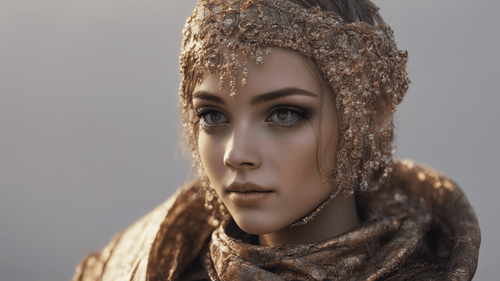
Introduction
In the rapidly evolving landscape of artificial intelligence (AI) and image processing, the emergence of JPEG to RAW AI has brought forth a transformative breakthrough. This technology holds the promise of revolutionizing the way we convert and enhance images, offering unprecedented control and quality. In this comprehensive article, we delve deep into the world of JPEG to RAW AI, exploring its applications, benefits, and answering frequently asked questions. Join us as we unravel the intricacies of this innovative advancement.
Understanding JPEG to RAW AI
JPEG to RAW AI is an ingenious process that harnesses the power of artificial intelligence to convert JPEG images, known for their lossy compression, into RAW format. RAW files retain an immense amount of data captured by the camera's sensor, allowing for extensive post-processing without compromising image quality. Through sophisticated algorithms and neural networks, JPEG to RAW AI effectively reconstructs lost details, colors, and dynamic range, breathing new life into digital photographs.
Key Advantages of JPEG to RAW AI Conversion
JPEG to RAW AI Conversion offers a myriad of benefits that cater to both photography enthusiasts and professionals. Here's a glimpse into the advantages this cutting-edge technology brings:
Unmatched Image Quality Enhancement
By restoring lost details and dynamic range, JPEG to RAW AI empowers photographers to enhance their images like never before. Fine textures, intricate shadows, and vibrant colors can be resurrected, elevating the visual appeal and impact of photographs.
Flexible Post-Processing
With RAW files at their disposal, photographers have unparalleled flexibility in post-processing. Exposure adjustments, color correction, and noise reduction can be fine-tuned with precision, resulting in polished and professional-grade visuals.
Preservation of Original Data
JPEG to RAW AI ensures that no pixel-level data is irreversibly discarded during the conversion process. This preservation of original data lays the foundation for limitless creative exploration without compromising image integrity.
Revolutionizing Editing Workflows
The technology's ability to seamlessly convert JPEGs to RAW extends its influence to editing workflows. It simplifies and accelerates the editing process, allowing photographers to achieve desired results efficiently.
Applications of JPEG to RAW AI
JPEG to RAW AI's versatility extends across various domains, introducing new possibilities and creative avenues. Some prominent applications include:
Photography and Visual Arts
Photographers and artists can leverage JPEG to RAW AI to elevate their creative vision. Whether capturing breathtaking landscapes or intricate portraits, the technology enables them to enhance and refine their work with precision.
Archiving and Restoration
In archival projects, where image preservation is paramount, JPEG to RAW AI plays a vital role. By converting aged and deteriorated JPEGs into RAW files, historical images can be revitalized and safeguarded for future generations.
Scientific Imaging
Scientific researchers utilize high-quality images for analysis and documentation. JPEG to RAW AI ensures that scientific visual data retains its accuracy and integrity, contributing to more reliable research outcomes.
E-commerce and Marketing
E-commerce platforms and marketing campaigns rely heavily on captivating visuals. JPEG to RAW AI can enhance product images, making them more enticing and persuasive to potential buyers.
Exploring the Technological Framework
At the heart of JPEG to RAW AI lies a sophisticated technological framework that blends AI algorithms, deep learning, and image processing techniques. The process involves:
-
Data Preprocessing: Initial image analysis to identify compression artifacts, loss of details, and color deviations.
-
Neural Network Training: Training AI models on a vast dataset of JPEG and RAW pairs to learn the intricacies of image reconstruction.
-
Feature Extraction: Extracting relevant features from the JPEG image to guide the conversion process.
-
Image Transformation: Applying advanced algorithms to transform the JPEG image into a RAW file while restoring lost details.
-
Quality Assessment: A final evaluation of the converted RAW image to ensure optimal quality and fidelity.
Frequently Asked Questions (FAQs)
Is JPEG to RAW AI conversion suitable for all types of images?
Absolutely. JPEG to RAW AI is versatile and can enhance various types of images, including portraits, landscapes, still life, and more.
Does JPEG to RAW AI require extensive technical knowledge?
Not necessarily. Many AI-powered software solutions offer user-friendly interfaces that simplify the conversion process.
Can JPEG to RAW AI salvage poorly exposed images?
While it can improve exposure to some extent, it's best to capture properly exposed images for optimal results.
Are there any risks of over-processing during conversion?
JPEG to RAW AI algorithms are designed to strike a balance between enhancement and over-processing, but user discretion is advised.
How does JPEG to RAW AI benefit professional photographers?
Professional photographers benefit from the increased control and quality, which align with their exacting standards and creative visions.
Is JPEG to RAW AI a standalone solution for image editing?
JPEG to RAW AI is a powerful tool but can be complemented by further image editing for more comprehensive enhancements.
Conclusion
In the dynamic realm of image processing and artificial intelligence, JPEG to RAW AI stands as a testament to human ingenuity and technological advancement. By bridging the gap between lossy JPEGs and the rich potential of RAW files, this transformative technology offers a new paradigm for image enhancement and creative exploration. As the field continues to evolve, the boundless possibilities unlocked by JPEG to RAW AI are sure to reshape the way we perceive, capture, and manipulate digital images. Embrace the future of visual storytelling and seize the remarkable opportunities that await with JPEG to RAW AI.